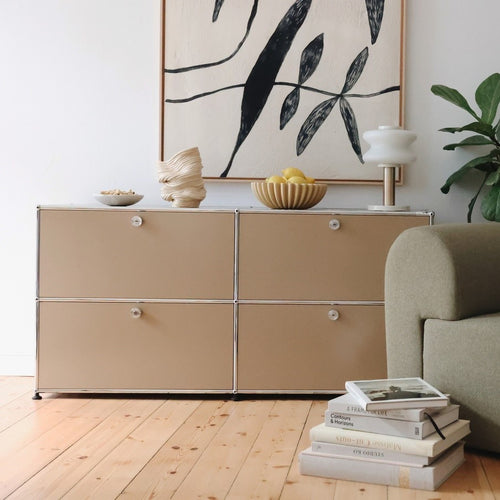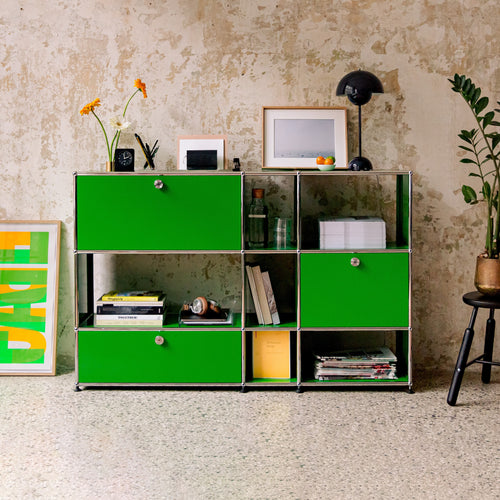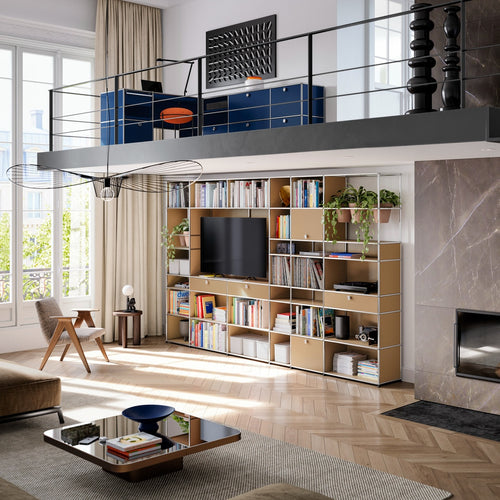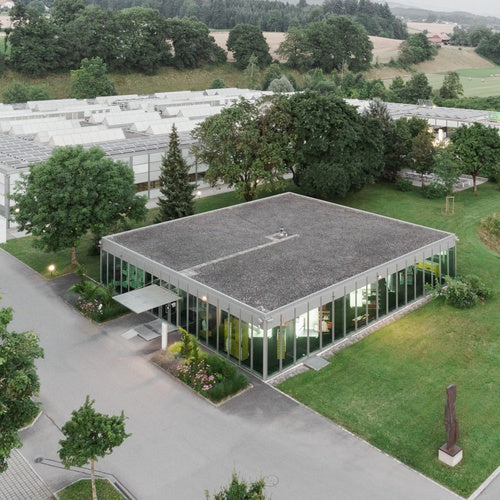New York, New York
Avril Nolan and Quy Nguyen
Though many might call themselves a curator nowadays, Avril Nolan and Quy Nguyen, the newly-married couple behind FORM Vintage, epitomize the word’s true definition. Driven by a deep curiosity and commitment to elevating craftsmanship of every creed, and with a vast breadth of knowledge about vintage and antiques between them, the pair started FORM as a medium to share their singular discoveries (and their stories) with the public.
Nolan and Nguyen are eminently qualified to do just that. Nolan, who was born in Ireland, is an accomplished dressmaker and has spent a decade working in various facets of the fashion industry in London and New York, logging many years handling public relations efforts for a number of style clients; and Nguyen, a longtime antiques dealer has held positions at some of New York’s most prestigious design titles, first as the Collecting Editor at Martha Stewart, then Style and Market Editor at Architectural Digest and Elle Décor, before landing in his current job as Director of Style in-house at Ralph Lauren Home. FORM’s first brick and mortar pop-up at The Wythe hotel in Brooklyn earlier this year featured a collection of clothes and objects, from lovingly worn-in Levi’s and a fluorescent Hermes blazer, to Turkish kilm rugs and 1920s French blown lab glass, tailored to the wonts of the potential buyers in their Williamsburg environs. And their pop-up in Montauk, Long Island this summer was also adroitly customized to the beach-hopping clientele nearby with Christian Dior swimwear from the 1950s, and kaftans and turquoise jewelry from the 1970s. These promise to be the first of many more exciting ventures to come for FORM.
Avril, I know you’re from Ireland, and Quy, from Texas; how did you both end up in New York?
Avril: I’d wanted to move here since I was really young. I have one aunt who lives in New York and she's amazing and very into fashion. Me and my sister would come over to visit her, and were just like "Oh my God," because that kind of glamorous lifestyle isn't something we’d ever seen in Ireland. So, I think that put it in my head from an early age and I just knew that as soon as I finished college I wanted to work in fashion and there aren't that many opportunities in Ireland. I was meant to move here with a friend, but she fell in love before she ever made it over, so I was like, "I'm just going to go on my own!"
Good for you. And you never left! What about you Quy?
Quy: I moved around a lot as a young kid with four siblings from California to Portland to Kansas to New Orleans and ended up in Texas. It was creatively limited in certain ways, but arts were big in my high school so I studied sculpture and drawing and painting and photography. I ended up coming to New York to go to Cooper Union to study sculpture, photography, and Super 8 filmmaking, and then eventually did woodworking as well. But my real education in antiques came from my first career job working for Fritz Karch, the Director of Collecting at Martha Stewart. We spent every day finding antiques and celebrating and lifting the stones on things that were overlooked and deemed unimportant. I learned so much through that process. I had had a lot of education in art and art history that tied back with antiquities, but not necessarily antiques in terms of what it means to live with them in the contemporary world.
“Commerce for us is the commerce of ideas, it's not a commerce of money. Money is a necessity, and we have to be smart about that, but it really is secondary”
Is there something about both of your upbringings that drew you to the world of vintage and antiques, and this notion of looking back to move forward?
Quy: Living in Texas, with a lot of racism and bigotry, especially being a refugee [Quy’s parents are from Vietnam and China] and extremely poor, art was an escape. Even as a young kid I already had inklings of collecting and because I couldn’t afford anything else I collected rocks and insects, and categorized everything, looking and studying differences. As a product of poverty, we spent our lives at thrift stores and bought everything used. By doing that I was automatically exposed to fifty years-worth of ideas and styles and color palettes and patterns and materials. I learned so much from constantly seeing and being able to, at a young age, look at things with a discriminating eye but a very open mind.
Avril: I’ve collected vintage since I was very young. I grew up watching a lot of Audrey Hepburn and Marilyn Monroe films so at the start my approach was much more romantic and nostalgic. I mean, I wore a 1950s full-skirted black Frank Usher dress to my debs [prom]! You couldn’t get the type of clothes that I wanted to wear in Ireland, but I was lucky because my dad lived in London so I would visit him and go to these vintage warehouses and come back with suitcases filled with things. Vintage was my porthole into another world. And when Quy and I first started seeing each other our shared interest in it was part of why we connected.
How did you graduate that passion into the business model for FORM?
Avril: Both of us have worked with so many new brands and had always noticed the huge gap between how modern stores sell and how vintage stores sell. You know that feeling of walking into a vintage store and it smells musty, and you need serious muscle power to look through the racks because they're so stuffed with clothes that have probably been there for the entire year. It’s almost exhausting. We wanted to see things differently and fuse the two shopping experiences, and make it not about quantity, but quality. Our goal is to shift people's perceptions and show that a lot of vintage clothing is actually still extremely relevant, and it feels as modern—if not more modern—than a lot of what's being sold today.
Quy: I think most importantly we start off with the person as the foundation. You know because starting off with the thing doesn't really make sense because things are everywhere, and at the end of the day, they don't mean much realistically. By promoting and supporting things that are made well, and things that are and will be future heirlooms, we focus FORM as a business based on the archetype of objects. Before we buy something we always ask if it makes sense for this person that we're creating, we ask if it's timeless, and we check condition to the nth degree because we want it to be on the level of new. Unless of course it's an extremely rare piece or it's a part of the nature of the clothing that you would want the wear because of the history and utilitarian kind of work patina. So, in that world you'll see holes and tears because to us it's beautiful and it's accepted, but in our Chanel blouses or anything like that, it's mint.
“I learned so much from constantly seeing and being able to, at a young age, look at things with a discriminating eye but a very open mind.”
The way you’ve decided to be very thoughtful about your editing with FORM, and really limit how many pieces you carry seems like the antithesis of the compulsive consumerism we see so much of now.
Quy: We’re great editors first and foremost. And Avril and I are having a conversation before each purchase. People are like, "You guys went to Paris and you only brought back 20 pieces?" But we say no to probably 600 pieces before we say yes to those 20. And I think it’s that act of strict editing, that FORM customers are responding to. People are buying less and putting more thought into it and they really want something that’s unique. While Instagram’s amazing and it opens up your eyes to a lot of different people doing different things, at the same time, things become very samey. People respond to our pieces because they know that nobody else is going to have them and they have a story.
You seem very committed to sharing the stories, and the history, behind everything you’re selling.
Quy: People are much more receptive now to objects when you use them to tell stories. I think pieces that will last for a really, really long time is a refreshing idea for people.
“People respond to our pieces because they know that nobody else is going to have them and they have a story.”
With this idea of everything you surround yourself with or wear being timeless; how does USM fit into that vision?
Quy: For our FORM pop-ups, the USM pieces made a perfect marriage. We’d never really seen antiques or objects placed in USM and that contrast for us was really exciting and very cool.
Avril: There’s the same contrast in our home. I think you see a lot of USM in clinical and office settings, but that’s just how people have approached it in the past that has earned it that association. With our USM pieces we like to bring a certain softness to them. In the living room the USM unit holds both our books and objects but also stacks of textiles which brings a softness to something that is typically quite austere. And we have two USM Highboards in our bedroom which we’ve hung an antique 1920s Japanese screen above and we have beautiful West African wooden sculptures on top of it; they’re modernist even when juxtaposing them with older objects.
Quy: There’s a rhythm between the USM pieces and our antiques, like the 1930s dresser or the 18th century Spanish lace curtains; each piece brings out different elements in the other. USM is really great at making you focus, and I think that's something that we're very interested in. What helps you focus through its display, its composition, the object itself, the simplicity of it? How can you look at something for a longer period of time, and how can you project yourself onto that thing?
This portrait was produced by the international interview magazine Freunde von Freunden. Find more USM furniture for your home and workspace here.
Thank you, Avril and Quy for showing us your beautiful home in Fort Greene, Brooklyn.
Discover more: @form_atelier, form-atelier.com
USM Sales Partner: USM Showroom New York





